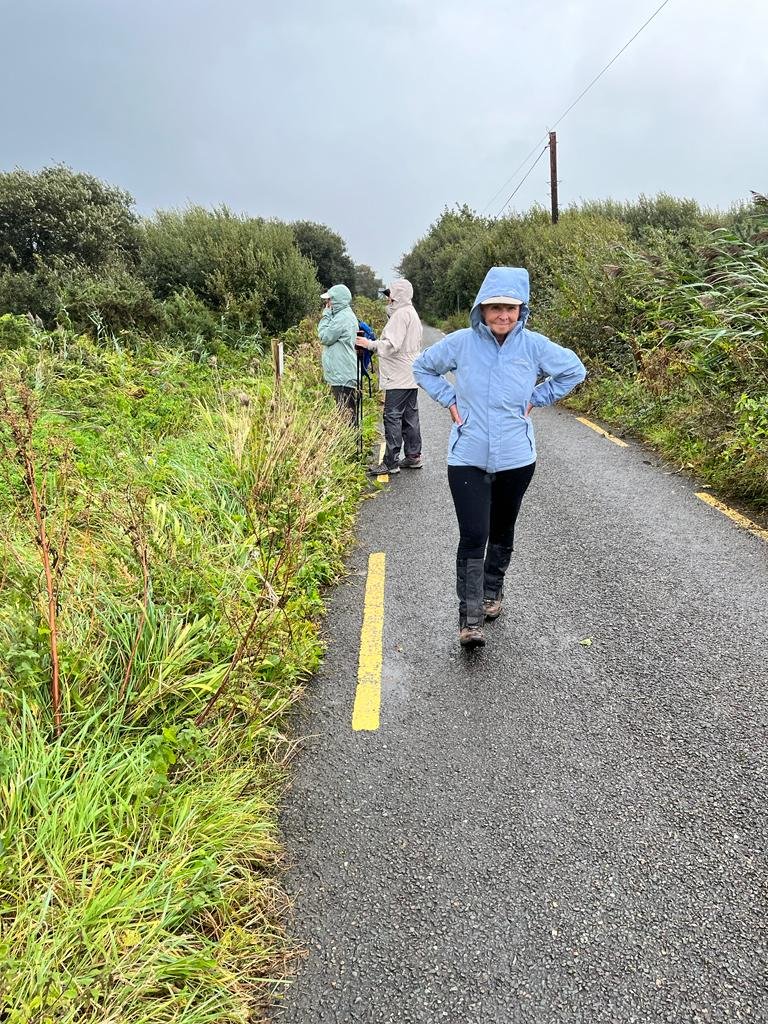Day 9: Reeth to Richmond
/The weather today was wonderful - around 24 degrees and sunny all day. It was hot in the sunshine - the mist and rain from earlier in the walk would have been welcome at the top of the hills. We walked up hill and down dale for around 17km, and then another kilometre or so into town. Note that I have expressed the distance in kilometres, a far more accurate measure than miles. The following applies to the mile signs in England (in real time walking):
- "1/4 mile" really means "1, 2 or 3 kilometres."
- "3/4 mile" really means "anything from 6 to 8 kilometres."
People we've met along the way...
Cyclists:
We have passed a few cyclists on our route. The first was on day one (St Bees to Ennerdale) when a cyclist emerged from the mists carrying his bicycle on his shoulders. This was shortly after we had seen Heathcliff (of the windswept hair and open necked shirt). Being early in our adventurer we were not quick enough with our cameras. We're better prepared now - here is a shot taken yesterday.
Canadians:
We came across our friends, The Canadian Cavalry, at lunch time today. They had taken all the best seats at the side of the road, so we had to settle for a paddock close by. We squatted in a field (being careful to avoid the manure) only to be faced with a farmer in a tractor. He was fertilising his fields with cow excrement he'd saved from earlier.
A Charge of Canadians
An Embarrassment of Navigators and a map
Other navigators:
The challenges of navigation referred to in previous posts are best illustrated by a visual representation of the difficulties. The first photo is of a crossroads encounter of navigator men (the women were well on their way when the photo was taken).
The second photo records a typical example of a guide book (Paul Hannon's Coast to Coast Walk, Hillside Publications, 2010, and Coast to Coast Walk A-Z, Geographer's Company Limited, 2013). We also have Wainwright's original book, and another guide book. As you will note, things can get complicated!
Quote of the Day
Lewis Carroll attended Richmond School. ‘The Walrus and the Carpenter’ from Through the Looking-Glass and What Alice Found There (1872) has some amusing moments that resonate with our walk:
The Walrus and the Carpenter
Walked on a mile or so,
And then they rested on a rock
Conveniently low:
And all the little Oysters stood
And waited in a row.
"The time has come," the Walrus said,
"To talk of many things:
Of shoes--and ships--and sealing-wax--
Of cabbages--and kings--
And why the sea is boiling hot--
And whether pigs have wings."
"But wait a bit," the Oysters cried,
"Before we have our chat;
For some of us are out of breath,
And all of us are fat!"
"No hurry!" said the Carpenter.
They thanked him much for that.
Finally, another picture of the YorkshireDales.
Fat Yorkshire Dales Cows
Richmond:
We arrived in Richmond at 2.30pm. This busy town was founded in 1071 (but dates from much earlier) and it flourished in the Georgian era (the 1700s through to the early 1800s). There are some wonderful examples of Georgian architecture including The King's Head Hotel, the Town Hall, and the Theatre.We have a rest day tomorrow. In tomorrow's post I'll be commenting on our accommodation to date,



























































